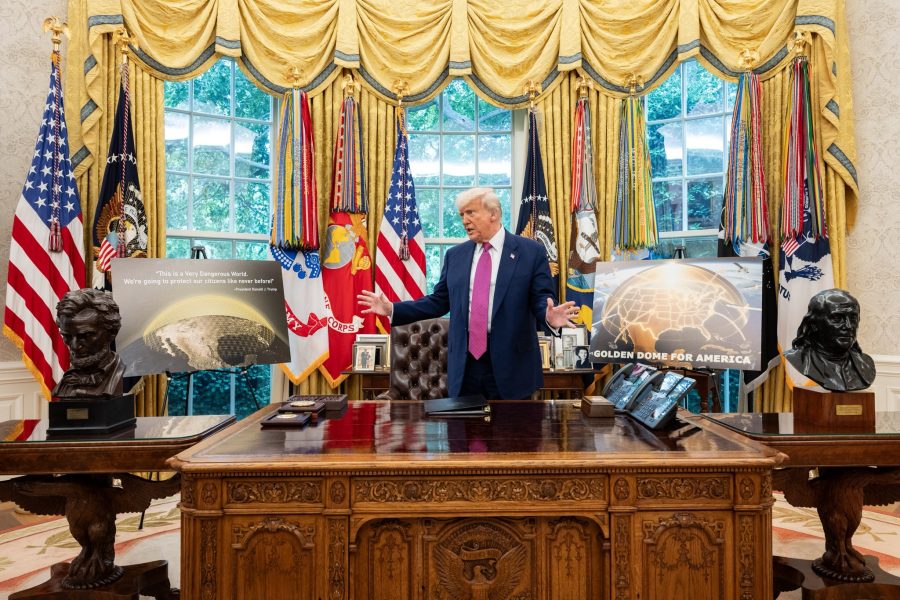The Missile Defense Agency is giving potential bidders an extra week to file proposals in response to its Golden Dome solicitation, the agency said, noting industry’s “considerable interest.”
The Sept. 10 request for proposals for SHIELD, or the Scalable Homeland Innovative Enterprise Layered Defense effort, kicked off a competition for up to $151 billion in contracts to develop and integrate homeland missile defense capabilities. The 10-year indefinite-delivery, indefinite-quantity contract will enable MDA to establish a pool of qualified companies to which the Pentagon can issue task orders for prototyping, experimentation, testing, and other activities.
Industry proposals were initially due Oct. 10, but after fielding more than 1,500 questions from companies over the last three weeks, MDA extended the deadline to Oct. 16, the agency said in an Oct. 2 memo.
After MDA issued its SHIELD solicitation, the Space Force on Sept. 18 announced it was seeking prototype proposals for space-based interceptor technology. The notice said USSF plans to make multiple awards—either through “other transaction authorities” or by staging prize competitions to narrow the playing field.
Since the start of President Donald Trump’s second term in office, Pentagon officials have been developing a plan to achieve the President’s vision for a layered network of sensors and interceptors—on the ground and in space—that would protect the U.S. from advanced missile attacks. Details so far have been scant.
Trump has said Golden Dome will cost $175 billion to develop over the next three years. The Pentagon already has $25 billion in hand due to congressional budget reconciliation legislation passed earlier this summer.
Experts suggest the price tag could be much higher, depending on how the architecture takes shape. The American Enterprise Institute, a Washington think tank, estimated in a Sept. 12 report the 20-year cost could range anywhere from $252 billion to $3.6 trillion.
The White House, meanwhile, has directed officials to develop a “reference architecture” that accelerates existing efforts—like the missile warning and tracking satellite constellations being developed by MDA and the Space Development Agency—and invest in new technologies, including space-based interceptors.
A team led by Golden Dome Director Gen. Michael Guetlein, formerly the Space Force’s Vice Chief of Staff, crafted an initial plan and briefed lawmakers Sept. 30 in a closed-door meeting.
The Pentagon hasn’t released the details of that plan, and Department of Defense officials haven’t spoken publicly about Golden Dome since August.
At a Space Foundation conference in late July, Guetlein said much of the technology the Pentagon envisions to be part of Golden Dome has already been proven—even the space-based interceptors that outsiders have suggested might not be technically feasible. Guetlein said the physics challenges related to SBIs have largely been overcome; what DOD still needs to is demonstrate it can deliver the capability affordably and in large numbers—which could require tens of thousands of interceptors.
Another challenge, he said, will be integrating a hodge-podge of disconnected systems into a single network and establishing the command-and-control infrastructure to manage it.
“We have to deliver on that vision of integrated command and control across the nation, across all these multiple platforms,” Guetlein said. “Then we have to bring to bear an integrated network of sensors to be able to close the fire control loop with an integrated network of interceptors that have probably never been brought together before, between the Army, the Navy, the Air Force, and even the Marine Corps.”


